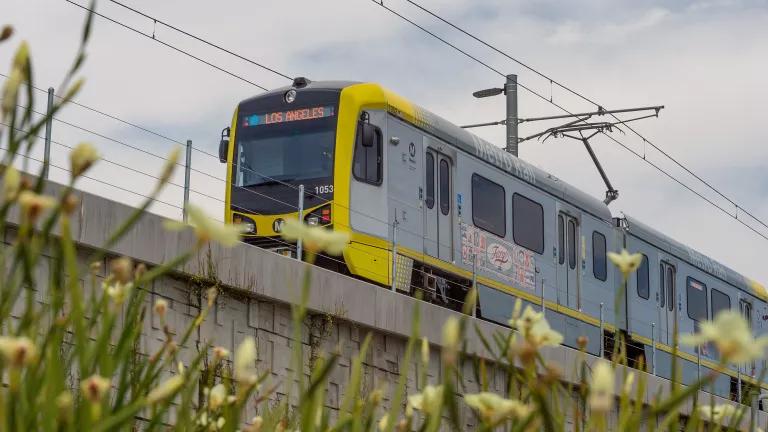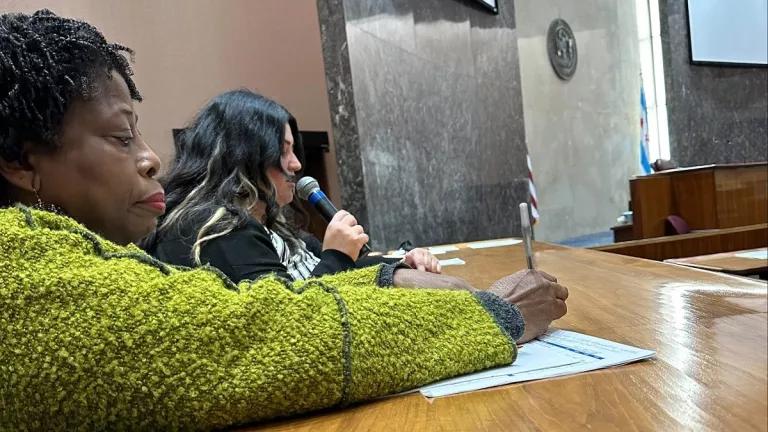California Gets It Right on Transportation—Almost

A sea change in California environmental law gives a leg up to sustainable transportation and land use projects, like the Expo Line in Los Angeles (above).
After four years of analysis and input from stakeholders, the California governor’s office has made formal recommendations to significantly change the way the state measures transportation’s impact on the environment.
The good news is that the Office of Planning and Research has recommended that the state take into account the environmental benefits of sustainable transportation and denser housing.
The bad news is that the policy continues to treat new and widened highways as environmentally beneficial, even though they merely encourage more driving that pollutes the air, degrade natural landscapes and contribute to more traffic congestion and crashes.
NRDC joined a chorus of other environmental advocates, including the Planning and Conservation League, Climate Resolve, and TransForm, in celebrating the new guidelines for sustainable infill projects and calling for the state to go further.
You can join us by calling on the Natural Resources Agency, which will formalize the new rules, to make sure highway projects don’t get a pass on being held to the highest environmental standards.
We’re asking Natural Resources to ensure that highway projects are evaluated according to how many vehicle-miles traveled they will add to our roads. You can provide public comment via email at CEQA.Guidelines@resources.ca.gov or in person at an upcoming public hearing.
Los Angeles
March 14, 2018, 1:30-4:30pm
California Science Center Annenberg Building Muses Room
700 Exposition Park Dr, Los Angeles, CA 90037
Sacramento
March 15, 2018, 1:30-4:30pm
California Energy Commission Rosenfeld Hearing Room
1516 9th Street, Sacramento, CA 95814
Why is this so important? When Gov. Jerry Brown signed state law SB743 in 2013, it represented a sea change for our hallmark environmental law, the California Environmental Quality Act (CEQA).
Under CEQA, major construction projects in the state must complete an environmental impact report that analyzes and discloses potential impacts to our environment—from noise and transportation to endangered species and shadows. The sponsors of those projects, be they government agencies or private companies, must then mitigate those impacts.
Often most salient to city dwellers is the analysis of a project’s transportation impacts. But CEQA law and practice regarding transportation had a major flaw prior to SB743: It measured transportation impacts with a metric called “level of service” (LOS) that assumed free flowing single-passenger vehicles were an environmental good that should be preserved and enhanced.
We know that in practice, solo driving is the opposite. Passenger automobiles produce the single largest source of carbon emissions in California, contribute to unhealthy air, and consume tremendously valuable public space. Further, encouraging driving runs counter to many state and city commitments to reducing our dependence on single-occupancy vehicles and increasing our use of sustainable transportation like public transit, carpooling, biking and walking.
We applaud the Governor’s Office of Planning and Research for proposing to kick LOS to the curb in order to make it easier to build sustainable transportation and infill housing projects and replace it with the metric, vehicle-miles traveled—a measure that better accounts for the true environmental impacts of driving.
But as long as there’s a massive carve out for new and expanded road projects, these new guidelines will fail to live up to their true environmental potential and the intent of SB743.
Read more about the difference between VMT and LOS on Amanda Eaken’s blog.




